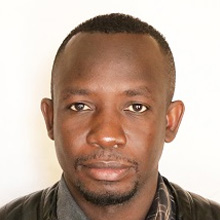Population health impact and cost-effectiveness of Tuberculosis diagnostics and treatment pathways in Malawi: Model-based evaluation Speaker: Newton Chagoma, CHE
Seminar
Event details
Abstract:
Introduction
Like many low-income countries (LICs), Malawi relies heavily on development assistance for health (DAH). It receives over $100 million annually from development partners, including medical equipment donations, to support healthcare programming. This financing model reflects the limited fiscal space for most LICs to effectively finance healthcare. To maximise the impact of DAH, evidence on effectiveness and cost-effectiveness is essential. Whereas this is generally available to inform choices of clinical interventions with direct impacts on health, the evidence base to build investments in health systems strengthening is much more limited. This study addresses this gap by quantifying the impact of TB diagnosis equipment on population health and evaluates cost-effectiveness of TB diagnostics and treatment pathways.
Methods
The study utilised the Thanzi la Onse model, a python-based “whole system and all-disease”, simulation of the Malawi’s health system. We focus on the TB module, which is calibrated to TB transmission dynamics in Malawi and treatment pathways. It is integrated with lifestyle and HIV modules and can evaluate policy choices, reflecting claims made and consequences for the resource constrained health system. Five scenarios were simulated for 10 years to evaluate the consequences of DAH on TB medical equipment availability: baseline (status quo), “No GeneXpert”, “No Chest Xray”, “Chest -Xray scale up” and “Outreach”. The primary outcome measured was Disability Adjusted Life Years (DALYs) across each scenario. Cost-effectiveness analysis was conducted in Ms Excel, and 3% discounting rate was applied.
Results
Well-targeted DAH to increase medical equipment availability is effective and cost-efficient, substantially improving population health. The availability of GeneXpert machines, which are mainly funded by DAH, leads to reduced population TB-related DALYs by 21%, compared to if it were not available; (i.e. 396,188 vs 480,195 DALYs). Further, scale-up of chest X-ray would reduce DALYs by nearly 11% (to 354,213 DALYs). The introduction of TB outreach services substantially reduced TB- related DALYs by 17% compared to status quo (327,124 DALYs). The expanded TB diagnostics scenarios were cost-effective at thresholds typically used to assess vertical DAH commitments. The GeneXpert and “CXR and Xpert” strategies had costs-per-DALY averted of $77 and $115, respectively. The Outreach scenario had a cost-per-DALY averted of $350.
Conclusion
DAH investments in TB diagnostics effectively improve health outcomes in Malawi. GeneXpert and Chest X-ray availability at current levels are cost-effective at thresholds typically used in Malawi. Outreach strategy offers further health benefits; although these might not be affordable for the Malawian health system, they would typically be approved at thresholds used to allocate DAH. To sustainably finance the health sector, funding TB diagnostics should be progressively integrated in long-term health strategies for Malawi.
Like many low-income countries (LICs), Malawi relies heavily on development assistance for health (DAH). It receives over $100 million annually from development partners, including medical equipment donations, to support healthcare programming. This financing model reflects the limited fiscal space for most LICs to effectively finance healthcare. To maximise the impact of DAH, evidence on effectiveness and cost-effectiveness is essential. Whereas this is generally available to inform choices of clinical interventions with direct impacts on health, the evidence base to build investments in health systems strengthening is much more limited. This study addresses this gap by quantifying the impact of TB diagnosis equipment on population health and evaluates cost-effectiveness of TB diagnostics and treatment pathways.
Methods
The study utilised the Thanzi la Onse model, a python-based “whole system and all-disease”, simulation of the Malawi’s health system. We focus on the TB module, which is calibrated to TB transmission dynamics in Malawi and treatment pathways. It is integrated with lifestyle and HIV modules and can evaluate policy choices, reflecting claims made and consequences for the resource constrained health system. Five scenarios were simulated for 10 years to evaluate the consequences of DAH on TB medical equipment availability: baseline (status quo), “No GeneXpert”, “No Chest Xray”, “Chest -Xray scale up” and “Outreach”. The primary outcome measured was Disability Adjusted Life Years (DALYs) across each scenario. Cost-effectiveness analysis was conducted in Ms Excel, and 3% discounting rate was applied.
Results
Well-targeted DAH to increase medical equipment availability is effective and cost-efficient, substantially improving population health. The availability of GeneXpert machines, which are mainly funded by DAH, leads to reduced population TB-related DALYs by 21%, compared to if it were not available; (i.e. 396,188 vs 480,195 DALYs). Further, scale-up of chest X-ray would reduce DALYs by nearly 11% (to 354,213 DALYs). The introduction of TB outreach services substantially reduced TB- related DALYs by 17% compared to status quo (327,124 DALYs). The expanded TB diagnostics scenarios were cost-effective at thresholds typically used to assess vertical DAH commitments. The GeneXpert and “CXR and Xpert” strategies had costs-per-DALY averted of $77 and $115, respectively. The Outreach scenario had a cost-per-DALY averted of $350.
Conclusion
DAH investments in TB diagnostics effectively improve health outcomes in Malawi. GeneXpert and Chest X-ray availability at current levels are cost-effective at thresholds typically used in Malawi. Outreach strategy offers further health benefits; although these might not be affordable for the Malawian health system, they would typically be approved at thresholds used to allocate DAH. To sustainably finance the health sector, funding TB diagnostics should be progressively integrated in long-term health strategies for Malawi.
If you are not a member of University of York staff and are interested in attending a seminar, please contact akseer.hussain@york.ac.uk so that we can ensure we have sufficient space.

Newton Chagoma, CHE
Venue details
Contact
For information about Global Health seminars, please contact Akseer Hussain.